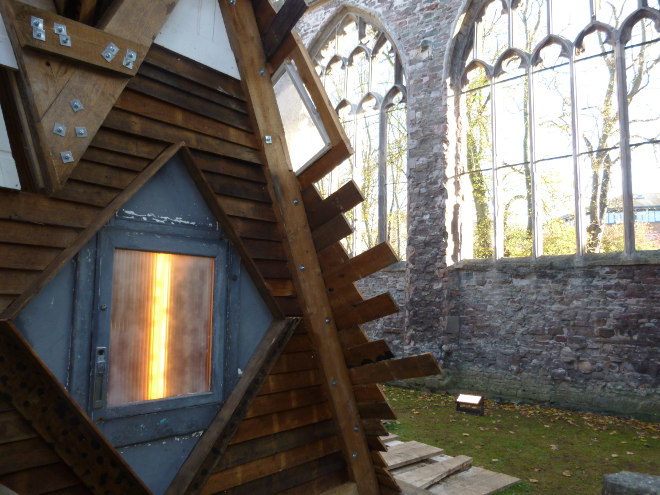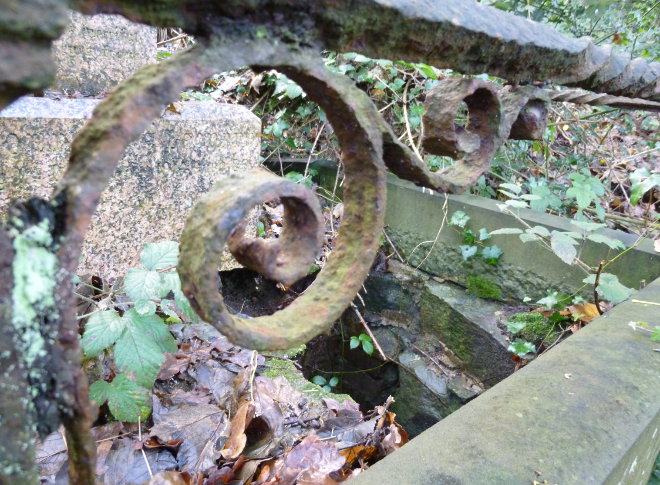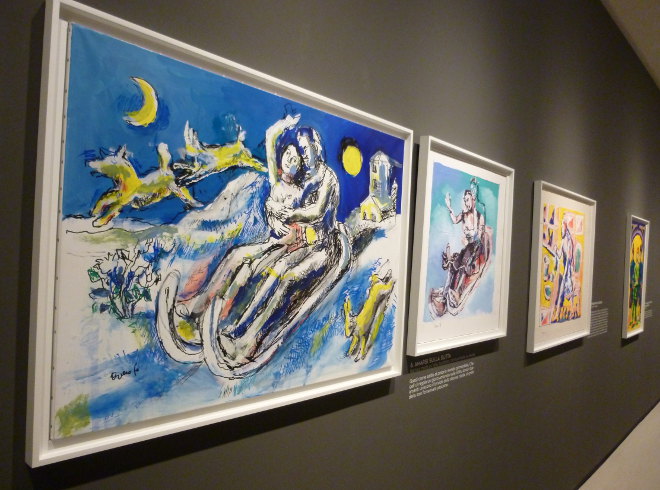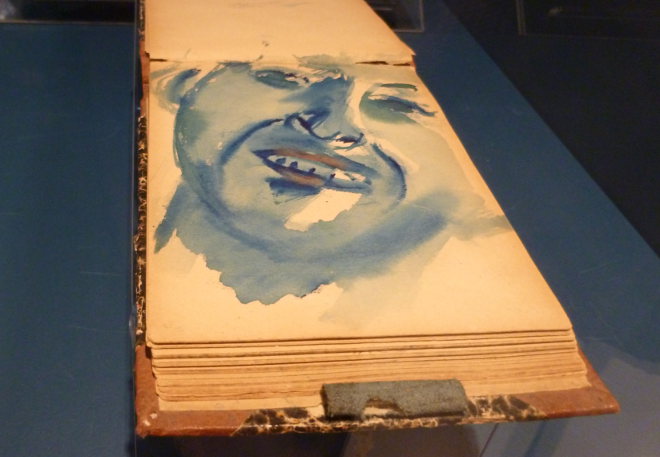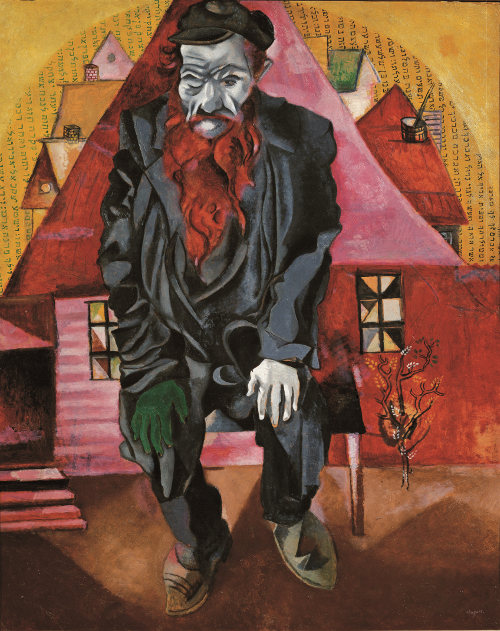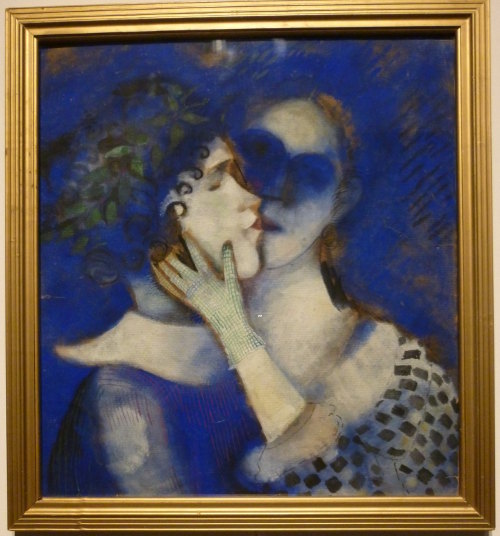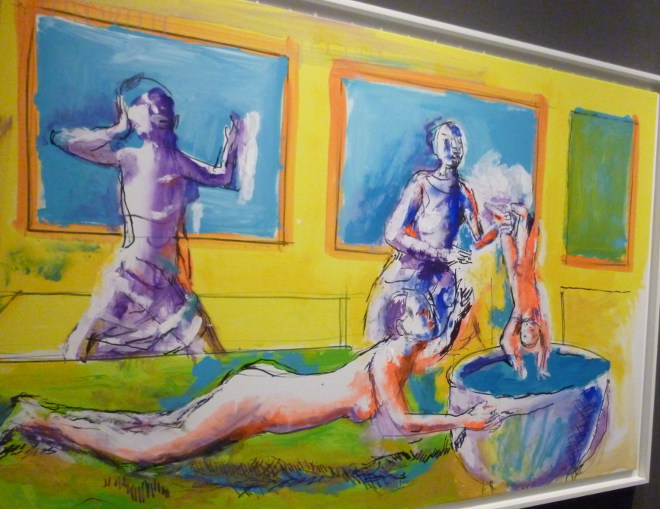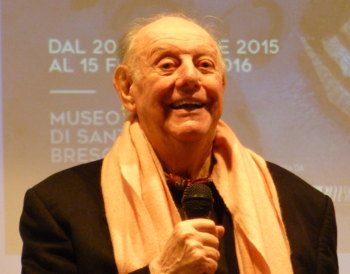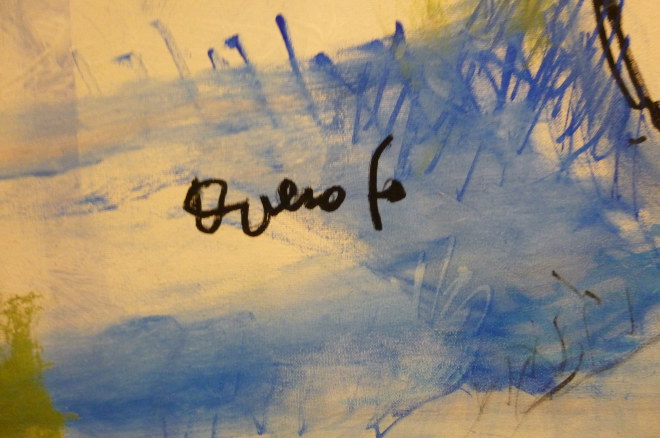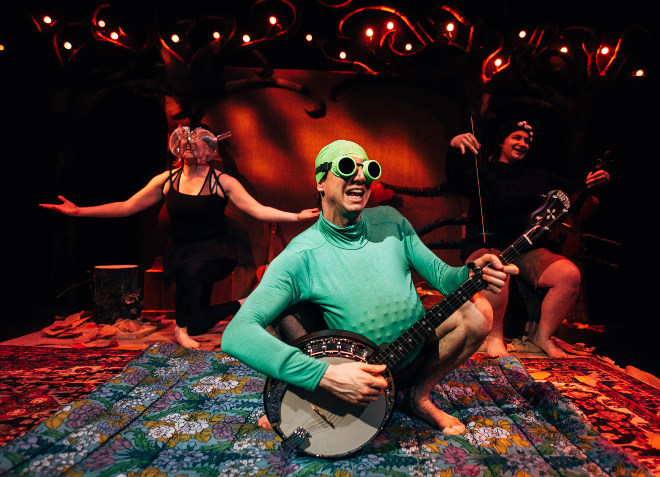
The Night That Autumn Turned To Winter photo by Jack Offord
Fairies, woodland creatures and wise women rampage through Bristol old Vic’s Christmas plays this year, shedding irreverent joy as they go.
I attended the press launch last week, and it was pure pleasure – what better way to spend a drizzly December day than in a theatre crammed with light, cascading streamers and baubles (kudos to the decorator), a gigantic fragrant Christmas tree and even a small bed to take selfies on?
The first treat of the afternoon was The Night That Autumn Turned to Christmas, a visual and musical feast. While aimed primarily at tiny tots, like all the best children’s fiction, it included plenty of humour for grown folks too, thanks to the talents of the three multi-tasking performers, Clare Beresford, on the double base Miriam Gould on the violin, and Dominic Conway playing guitar, banjo and ukulele.
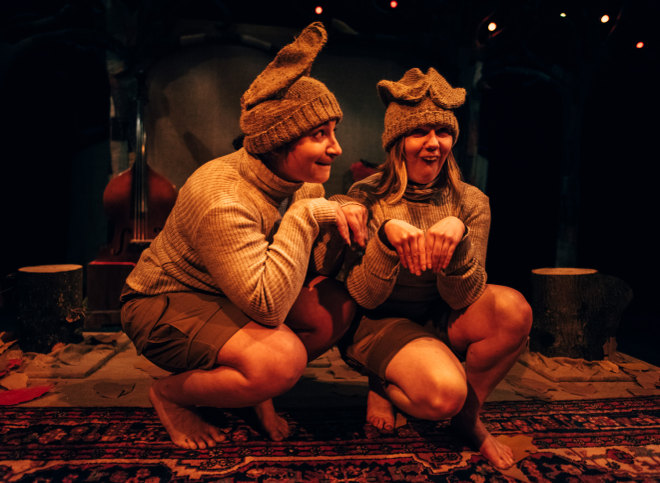
Miriam Gould and Clare Beresford as opera-singing rabbits photo by Jack Offord
The show is a collaboration between the celebrated Little Bulb Theatre, Farnham Maltings and Bristol Old Vic, and is crammed with moments to treasure, regardless of age. Want opera-singing rabbits? They’ve got those. A moral conundrum between a fly, a frog and a spider? It’s in there. A Scottish owl quoting poetry by Robert Burns? Absolutely (and this one was a particular pleasure). There’s also a smattering of audience participation as we aid the woodland wardens (who happen to be fairies, though not of your usual fey and Disney-fied variety) in helping the animals prepare for the long winter ahead, but just enough to keep the smaller audience members entranced.
As clever lighting shifts the timescale from day to night, one final treat may be in store – a glimpse of the winter unicorn. Give yourself up to the magic of the spectacle and you’ll feel a shiver run down your spine as it finally trots into view…
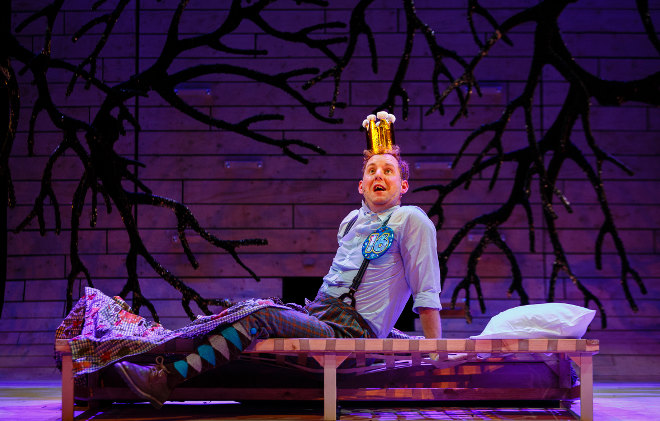
David Emmings as Prince Percy Photo by Steve Tanner
And then onto Sleeping Beauty, a slightly weightier affair suitable for ages seven and up, directed by the much-lauded Sally Cookson. The scene opens on Prince Percy weeping bucket-loads of tears, and ended, as all the best tales too, with the beginning of a new adventure.
In this version, more than gender is changed. The fairy godmothers, or good fairies, have morphed into wise women – often caught chatting via the clunky telephones they keep in their equally enormous handbags.
The prince’s first birthday is approaching, and a party is planned, the invitations dispersed. Naturally, the invite to wise-women-gone-bad Sylvia (Stu Goodwin on dazzling form) goes unwritten and unsent, with familiar results. The prince is doomed to prick his finger before his 16th birthday.
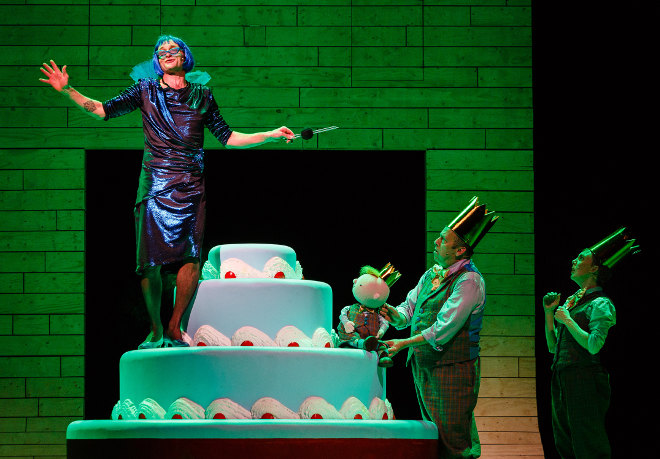
Stu Goodwin as Sylvia, Joe Hall as King Derek and Lucy Tuck as Queen Vanessa – Photo by Steve Tanner
In fact, the prince’s sleep lasts only to the interval thanks to passerby Deilen, with the whole second half drawing inspiration from a Welsh folktale and taken up with Deilen’s quest to find ‘the leaves that hang but do not grow’. Before she can achieve her aim, wicked Sylvia saunters back into the mix, resulting in the floods of tears we witnessed at the beginning and giving Deilen one more task to perform.
Kezrena James as Deilen is an independent, strong-minded, believable heroine who serves as a strong antidote to the usual female fare of fairytales and pantomimes alike, while David Emmings’ Prince Percy is kind-hearted and just gutsy enough not to be irredeemably annoying.
But, (along with the musicians Brian Hargreaves, Ruth Hammond and Pat Moran who deserve a special mention for sweeping the action along) it’s the wise women who steal the show – hats, handbags, oversized feet, wings and all. They’re a delight joy to watch – old biddies doing their best for the young prince they’re determined to see find a happy ending.
Sleeping Beauty is at Bristol Old Vic Theatre until the 17 January 2016.
The Night That Autumn Turned to Winter is on until 10 January 2016.
Find out more at www.bristololdvic.org.uk.
 You may recall that last week I published a piece on the art of Claire Luxton. I held this particular piece, To The Isle 2, back because it somehow cut to the quick of me.
You may recall that last week I published a piece on the art of Claire Luxton. I held this particular piece, To The Isle 2, back because it somehow cut to the quick of me.




